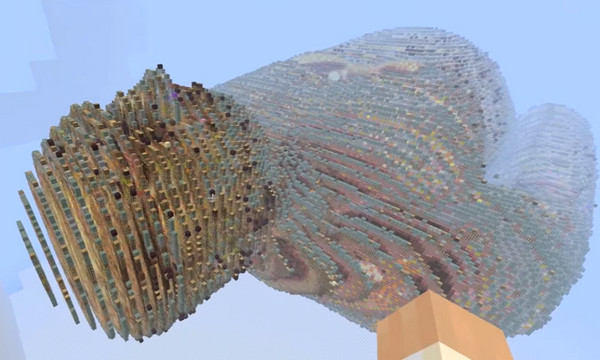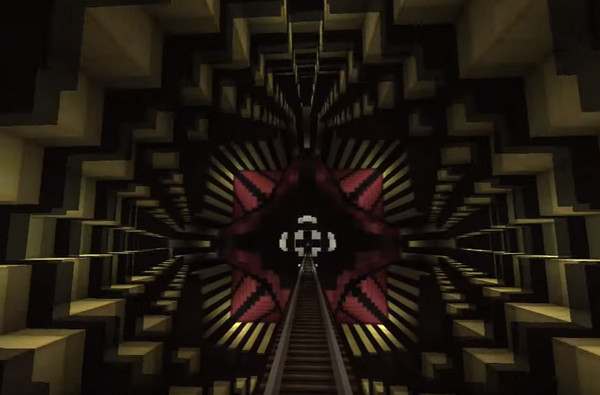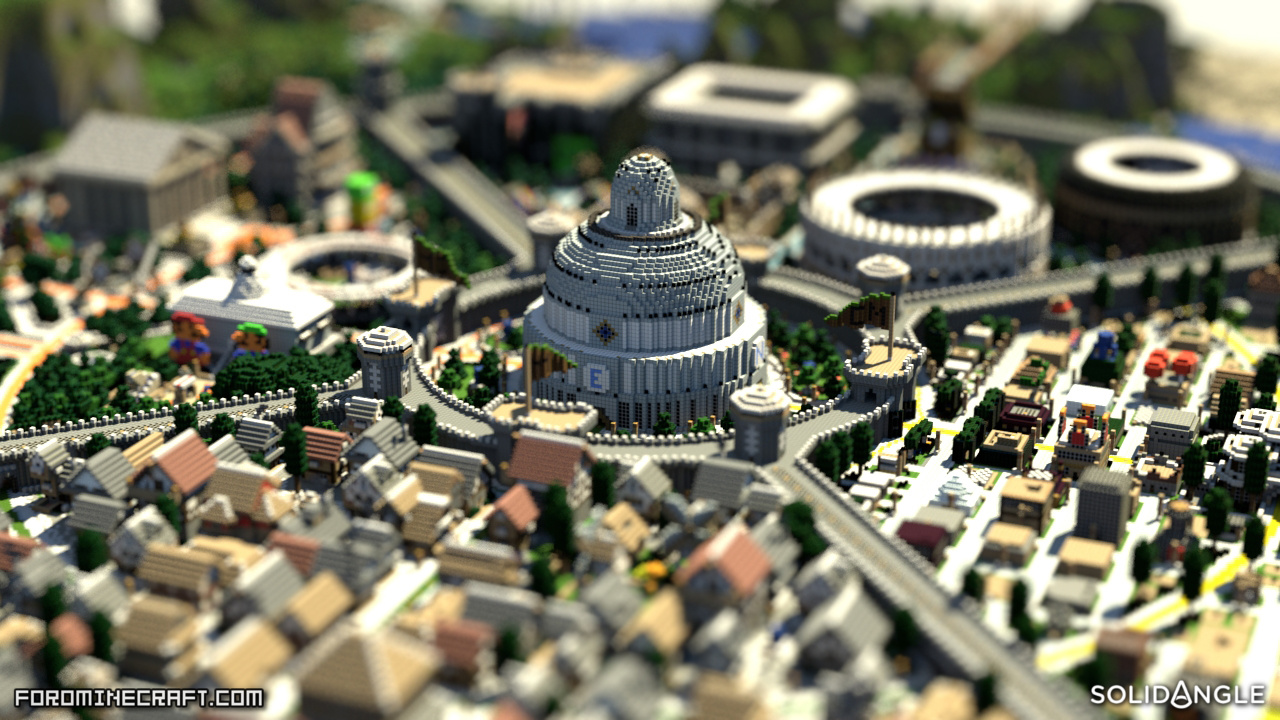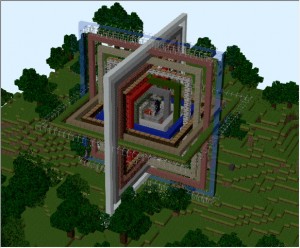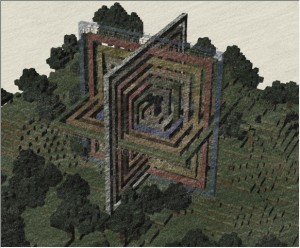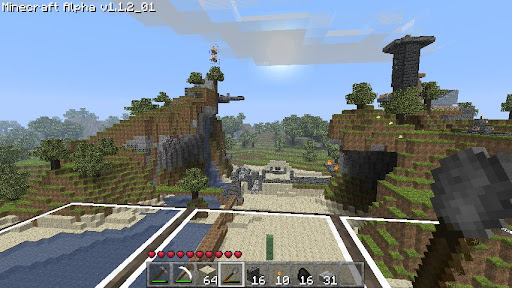Say what? Minecon is a convention for Minecraft, so why in this blog? Well, I was invited to be on a panel about 3D printing Minecraft models, since I wrote Mineways (which gets a crazy 600 downloads a day; beats me who all these people are. I think it’s a case of 600 download it, 60 try it, 6 try it more than once, 0.6 become real users).

David Ng in the Mineways hat
It was a bit odd going to this convention, especially since it was at the Anaheim Convention Center, where I was just two months ago for SIGGRAPH. This convention is the same size as SIGGRAPH, 12,000 attendees plus panelists, staff, exhibitors, etc. One organizer said a total of 14K attended. Of course, the tickets for Minecon sold out in 6 minutes – there are over 100 million copies of Minecraft sold and a lot of fanatical users out there. It’s only two days long, it uses somewhat less (and sometimes more) of the convention center’s space, and the median age of an attendee is probably around 12. My photo album is here, note in particular this one, where just about everyone is in one very long room – that’s something I don’t see at SIGGRAPH.
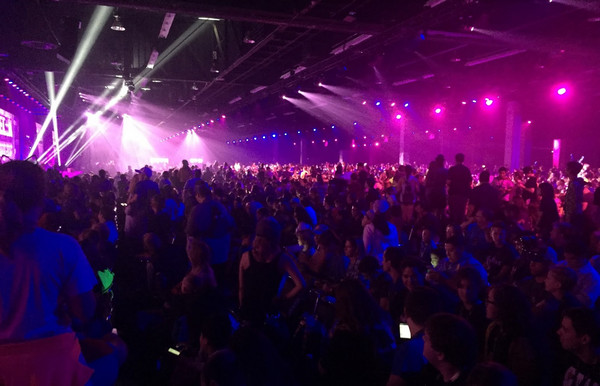
Not SIGGRAPH
It’s not all just kids and pixelated blocks. There were a few good general technical talks about VR, video techniques, voxel modeling methods, etc. For example, John Carmack and others from Oculus spoke about the challenges of porting Minecraft to the Rift. Scattered throughout this presentation are some interesting bits about the user experience. Some clever ideas such as the person jumping a short distance actually gets a view that travels in a straight line, though his friends see him jumping in a parabola (parabolas upset the stomach more). Playing the ambient music actually helps stave off motion sickness for awhile, or so they think. They have a “chill out” feature that lets you leave the action and hang out in a quiet virtual room, looking at the game through a 2D window. Various other things. They spent 6 months of polishing the VR version before releasing it (despite a fair bit of pressure to get it out the door in a minimal-port form). Best/ickiest Carmack quote, “Don’t push it. We don’t need to be cleaning up sick in the demo room.” Honestly, an interesting session, with hints of the political pressure on the team. I’m impressed that they were able to take the time to polish the experience, given how an early release of the game’s port would undoubtedly help drive sales.
BlockWorks had a session on how they did their voxel modeling, with some slides of their incredible constructions. Seriously, click that link. It was interesting in that each artist tends to have a specialty – architecture, organics, mechanicals, etc. They use the free Chunky path tracer (great tool! I’ve played with it.) along with traditional renderers such as Cinema 4D. I would have liked to hear more about their custom voxel-based modeling tools, but alackaday, not much mention beyond WorldEdit and VoxelSniper. Also, they avoid using mesh voxelizers such as binvox and Qubicle. (Qubicle, by the way, looks like a nice package for All Things Voxel, including a mesh voxelizer than retains the color of the mesh.) Related, though not at Minecon, this article about RenderMan and Minecraft – a good detailed “how to” read.
You remember the Visible Human Project? I laughed when I saw this, and talked at length with its creator, Wizard Keen, aka Adam Clarke.
I also met some people working on Spigot, the unofficial mod platform for Minecraft. One explained to me in depth how Minecraft’s impressive terrain generation worked, as he had carefully decompiled it all in order to make a mod. Basically, there’s pass after pass of applying Perlin Noise in various ways. First the overall terrain, in a single block type. Then put biomes on. Then for each biome add the “topsoil layer” (e.g. grass and three dirt atop everything for the grasslands). Carve a bit more. Add tunnels separately. Add minerals. On and on. What was interesting to me was that there was this layered approach at all, that it wasn’t some giant single-pass function but each had its own function, e.g. add topsoil.
Other than the lead developer of Minecraft, YouTubers were the stars of the con. By some estimates, 15% of Youtube’s content is videogame related, and Minecraft dominates (GTA’s second). (Hey, before I did 12 steps for Minecraft, I made well over a hundred videos, mostly not worth watching. Here’s a reason why I love Minecraft.) The two main video editing packages used for Minecraft videos are Premier Pro & Vegas Pro. People uses FRAPS, OBS, and Action for video capture.
Tidbit: this Minecraft-related Hour of Code lesson from code.org is evidently extremely popular. Point kids at it, it uses a visual code editor (Blockly) to introduce “if” statements, loops, etc.
Entirely non-Minecraft, but I learned about it at Minecon: I’m probably the last person on Twitter to know about tweetdeck, which makes Twitter a bit more friendly.
My little talk at the panel went well, slides here. I particularly like that David Ng is using Minecraft with his students to build physical worlds.
Oh, and videos. I’d say the most amazing videos I saw were in the Rube Goldberg session; short session preview here, worth your while. The coaster rides by Nuropsych1 and others were astounding. If you want to veg out (and wait through ads), check the Dr. Who, GhostBusters, and Beetle Juice coasters, among others. Impressive builds, great lighting effects and optical illusions, lovely redstone (electronics) work, camera tricks, and it’s astounding it can all be done within Minecraft.


